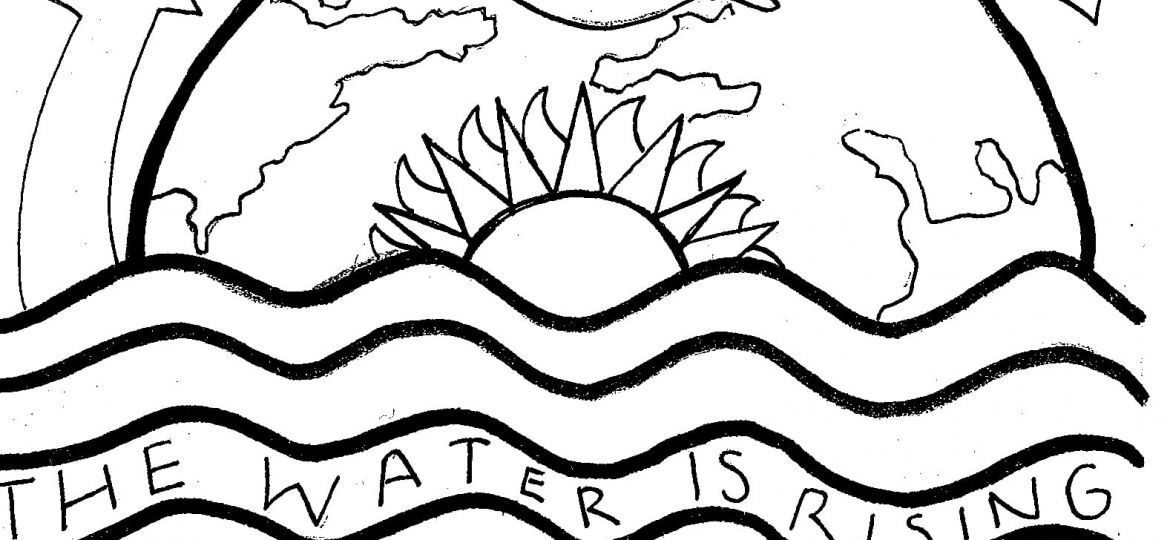
While the United States of America remains the only country in the world to not have signed the Paris climate accord, some countries today are already planning to combat the effects of climate change.
One of the most extreme examples is the Republic of Kiribati. Situated in the Pacific Ocean about halfway between Hawaii and Australia and comprised of 33 coral atolls and islands, much of the nation is just barely above sea water. This makes it particularly vulnerable to rising sea levels. The former president of Kiribati, Anote Tong, said that the entire country would be underwater before the end of this century.
With the whole nation under threat, the government will either have to find a way to adapt so that Kiribati’s inhabitants can stay, or the 100,000 citizens will have to seek asylum in other countries.
Tong thinks he found a solution in artificial islands. Artificially constructed islands are not unheard of: the United Arab Emirates constructed the famous Palm Jumeirah archipelago a little over ten years ago.
Despite being a viable option, artificial islands are exorbitantly expensive. The Palm Jumeirah cost the UAE $12 billion and the project to raise Kiribati could cost as much as $100 million. The small nation would be dependent on international aid for support in the process.
It seems possible that Kiribati could have success in raising the money, especially since other countries would have to take its residents in if the nation did go underwater and an artificial island seems like the only way to ensure Kiribati’s future existence.
Despite artificial islands being a feasible solution for Kiribati, it is neither a permanent solution, nor a solution that would work for the rest of the world.
According to the estimates, the cost of raising Kiribati breaks down to about $1,000 per citizen. Such a rate may allow artificial islands to be possible for small populations, but according to “Worldwatch Institute,” over one billion people are currently threatened by rising sea levels.
Investing such large amounts of money in artificial islands seems even less like a reasonable response to climate change when they likely would not be permanent solutions. The International Business Times points out that artificial islands constructed to combat the effects of climate change have the potential themselves to be eventually swallowed by rising sea levels.
The Intergovernmental Panel on Climate Change has estimated that sea levels will rise around three feet due to climate change, but others have said that is too conservative.
To be fair, engineers from the Maritime Research Institute Netherlands have been working on a prototype of “floating islands” made of interconnecting floating panels and tethered to the sea floor. Adjusting the length of the tethers as sea levels rise seems like a more reasonable adaptation than continuing to pile land matter on artificial islands.
Rising sea levels is only one negative effect of climate change that affects low laying areas though.
One result of higher and warmer seas is more extreme storms. Just this past summer hurricanes Harvey, Maria and Irma wreaked catastrophic havoc in Texas, the southeast United States and the Caribbean. Experts say that climate change contributed to the magnitude of these storms.
If these storms could do such damage to natural land, imagine the damage and extra cost in reparations to manmade landmasses, floating or not.
Artificial islands shouldn’t be written off entirely since they are feasible and could be helpful in some areas, but they should not be considered a cure-all for those whose homes are in danger of disappearing with the rising water. The sad irony is that these islands are more accessible to wealthy nations, the biggest contributors to climate change, while many of the poorer nations bear the brunt of the negative effects.
Instead of spending billions of dollars trying to outfit whole communities onto artificial islands that may or may not withstand the changes happening around them, those funds could be better allocated to aid in relocation to areas not threatened by rising waters.
It is certainly more difficult for countries like Kiribati where there is no high ground to go to, and maybe constructing artificial islands will work there. But countries around the world including the US are going to have to start to examine efficient and accessible avenues of housing for people who will lose their homes due to rising sea levels and other effects of climate change.

